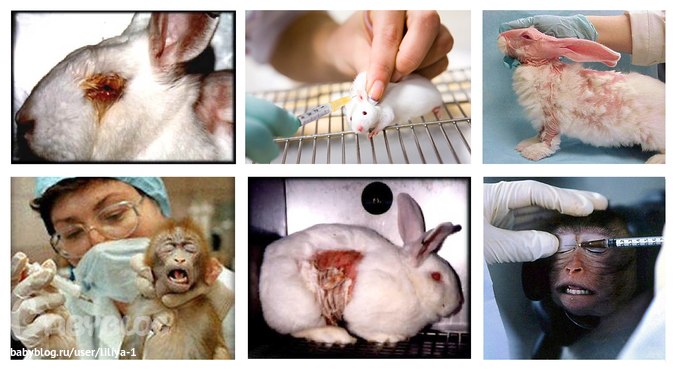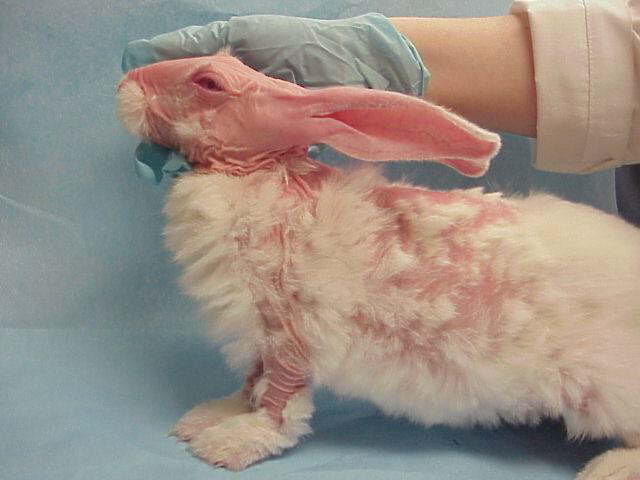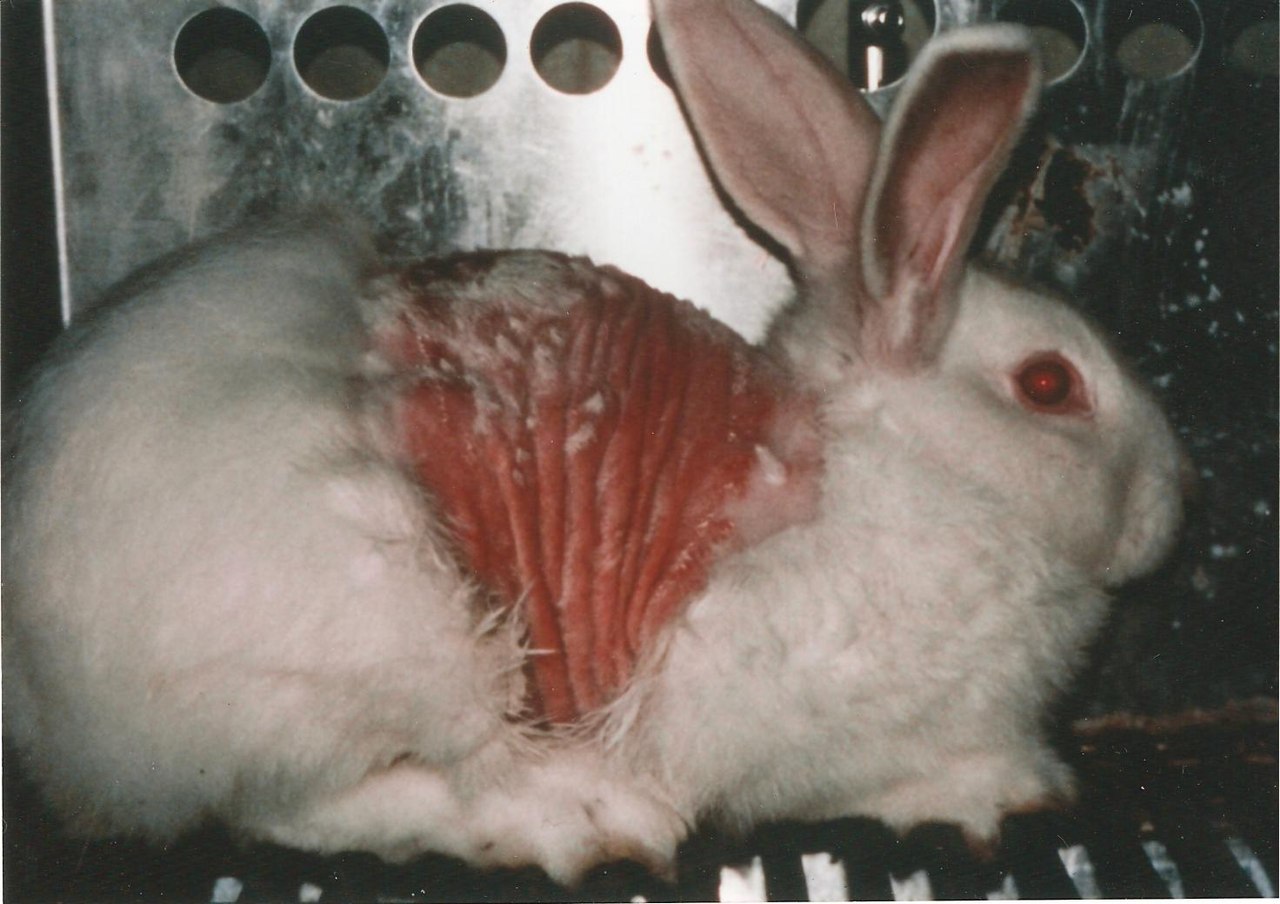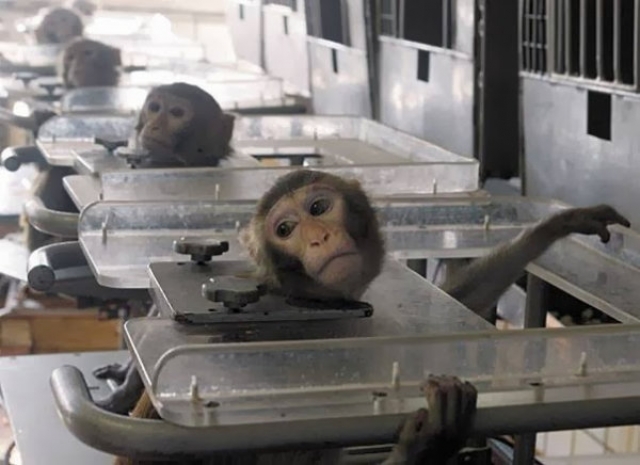
On March 11, 2017 CTV’s W5 aired “In the Name of Science” showing hidden camera footage that was taken inside a research facility in the Montreal area. The footage shows dogs, pigs and monkeys in distress.
The issue of animals used in research, teaching and testing is both complicated and secretive. We know that Canadians are deeply disturbed by the systemic suffering of animals hidden away in research facilities across Canada, and want to take immediate action to protect animals.
There is no one simple action that can address all the aspects of animals harmed in research.
We can explain three main areas of concern and how you can take immediate action by reaching out to specific politicians on each separate issue. Animal Alliance is currently working to end animals used in cosmetic testing, pets in research (known as “pound seizure” or “pound release”) and animals used by the Department of National Defence.
Cosmetic Testing:
Bill S-214, the Cruelty-Free Cosmetics Act, is a bill that will end animal testing for cosmetics in Canada, and would ban the sale of cosmetics and ingredients that have been recently tested on animals in other jurisdictions is in process.
We need to encourage the Honourable Ginette Petitpas Taylor, Minister of Health, to pass this Bill.

Click here for all the information you will need to take action.
Pets in Research (Pound Release/Pound Seizure):
Every year thousands of lost and abandoned dogs and cats are purchased by research facilities from municipal pounds and used for experimental purposes. They are subjected to a life of pain and suffering and eventually killed.
Pound release refers to the legislation that allows the sale or release of dogs and cats from pounds or shelters to a research, testing, or educational laboratories. The Ontario Animals For Research Act makes this practice the law in that province. Ontario is now the only province, in all of Canada, where pound release is actually mandated by law.
Click here for all the info you need to take action now.
Military Trauma Training:
The Department of National Defence’s reliance on outmoded training using animals is needlessly endangering the men and women who Canada puts in harm’s way. Ending the cruel and gratuitous killing and harming of animals at DND facilities can save lives, both animal and human.
Canada is one of the few countries remaining that hasn’t replaced animal use for trauma training with high quality alternatives. Eighty percent of NATO countries don’t use animals for training but use more modern methods that provide better outcomes.
We need to contact Canada’s Minister of National Defence to speak up for Canada’s soldiers as well as for animals, by demanding that Canada join with other nations who are using more modern, effective methods.


Click here for all the info you need to take action for Canada’s soldiers and for suffering animals.
Fast Facts about Animal Research in Canada:
It is legal in Canada to use live animals to test cosmetics, household products, pesticides and poisons, drugs and many other substances. It is legal to subject these animals to the most severe levels of pain, in some instances without pain relief.
In one year, between 2008 and 2009 the number of animals used for experimentation in Canada jumped from 2,272,815 to 3,375,027 a staggering 1,102,212 increase. The number has remained over three million for most the intervening years.
30% (1,106,864) of the animals used in research in 2015 were subjected to Level D invasive experiments which are described by Canadian Council on Animal Care (CCAC) as “experiments which cause moderate to severe distress or discomfort.”
In the same year, 2% (76,646) were subjected to Level E invasive experiments which are described by CCAC as “procedures which cause severe pain near, at, or above the pain tolerance threshold of unanesthetized conscious animals.”
Over 200,000 animals are used “testing”. The CCAC defines testing as “Studies for regulatory testing of products for the protection of humans, animals, or the environment.”
Animals are used even when non-animal alternatives are available. Researchers are reluctant to try new methods and there is often no incentive to discontinue animal use. Funding bodies provide little or no incentive to seek alternative approaches to the current live animal experimentation.
Species of animals used in testing include: fish, cats, dogs, guinea pigs, mice, monkeys, sheep, beaver, hamsters, pigs, rabbits and rats.

Why Does This Still Happen?
The research community is very secretive. There is no legislative mechanism to find out what happens behind the closed doors of a private research lab. Labs that receive public funds must be “certified” by the Canadian Council on Animal Care (the CCAC). The CCAC describes itself as “the national peer-review organization responsible for setting, maintaining, and overseeing the implementation of high standards for animal ethics and care in science throughout Canada.” However, it is a voluntary body with no regulatory capacity. It has some control over public institutions by virtue of funding being tied to animal use reporting and episodic inspections.
And there is no public transparency or accountability of CCAC activities. Although it publishes aggregate numbers of research animals, very little additional information is available. Basic information – source of the animals, province where the experiments are conducted, number of animals used, acute verses chronic experiments – is not available.
Animal Alliance monitors the statistics publish by the CCAC. Over the years, the publicly available data has become increasingly narrow and vague. For example, the number of animals used in each province used to be listed separately; now, these numbers are no longer disseminated to the public. And there is no legislative mechanism to compel the CCAC to provide that information – the organization, funded by tax dollars, is not subject to Freedom of Information requests.
Private testing labs are not required to report animal use or be subjected to inspections unless they voluntarily agree.
Even when the CCAC can influence institutions to, for example, replace animal use with alternatives as per its 3Rs programme, it fails to do so. Live terminal surgeries of beagles at the University of Guelph was allowed to continue even though alternatives were available and offered in the same programme, until Animal Alliance intervened. Even then, the University made the decision to end the practice because of Animal Alliance, not the CCAC.
Source: save-animals.info

Leave a Reply
You must be logged in to post a comment.